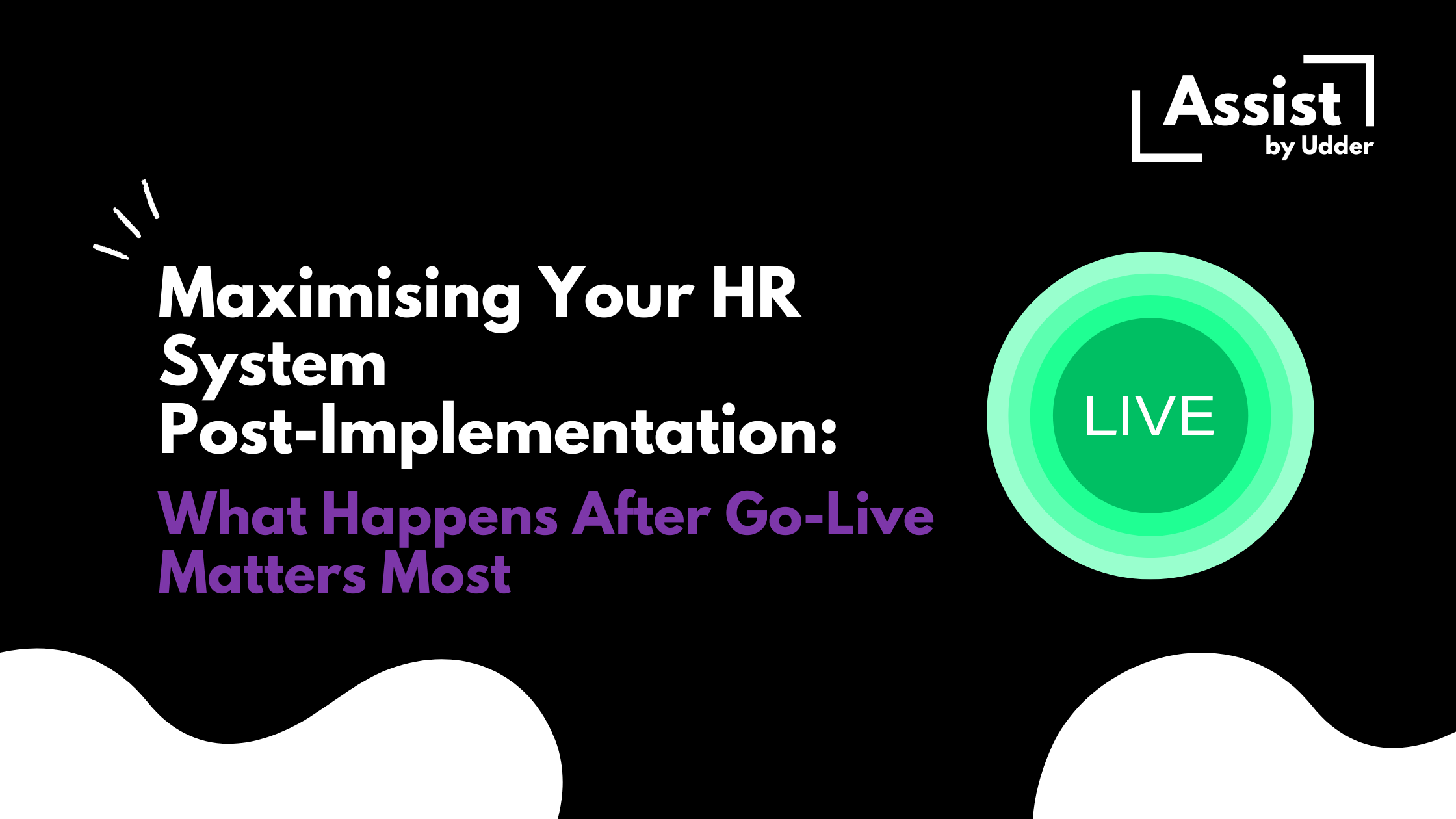Go-live is not the finish line. It’s the starting gate.
After months of planning, configuring, testing, and training, your new HR system is finally live. But now comes the harder part: making it work.
Too many HR teams fall into the trap of thinking that once a platform is launched, their job is done. In reality, the post-implementation phase is where real value and risk live. Without structured support and continuous optimisation, the initial investment in your HR system can fade fast.
Here’s how to make the most of your HR tech long after launch day.
1. Shift from Project to Product Thinking
Treat your HR system like a living product, not a one-off project. That means assigning clear ownership, tracking usage and adoption, and maintaining a backlog of improvements. Just like any digital product.
2. Embed Ongoing User Support
Launch excitement fades fast when users encounter bugs, confusing workflows, or missing features. Providing continuous support, whether internal or outsourced, is critical for sustained adoption. Make it easy for users to ask questions, get help, and feel supported.
3. Monitor and Optimise System Performance
Implementation is just the beginning. Regular reviews of workflows, automations, and reporting help ensure your system continues to support evolving business needs. This includes keeping up with vendor releases and enabling new features that add value.
4. Capture Feedback (Then Act On It)
Set up structured feedback loops with your HR team and end-users. Understand what’s working, what’s clunky, and where opportunities lie. The best HR systems are shaped by their users, not just configured by consultants.
5. Build HR Tech Capability in Your Team
Long-term success depends on internal capability. Invest in training and knowledge sharing so your team understands not just how to use the system, but how to think strategically about it.
What Great Looks Like
You know post-implementation is working well when:
- Adoption rates are high and consistent
- Admin work is reduced, not just moved around
- Your team actively uses system data to make decisions
- Change requests are logged, prioritised, and actioned regularly
- New features are rolled out with purpose, not panic
The Bottom Line
Post-implementation is where HR tech success is won or lost. With the right support and strategic thinking, your system becomes more than software. It becomes an enabler of better HR.
Want to know where your HR tech stands today?
Take our free, no-obligation HR Tech Operations Diagnostic. Just 10 quick questions to assess how you manage, maintain, and optimise your HR systems.

